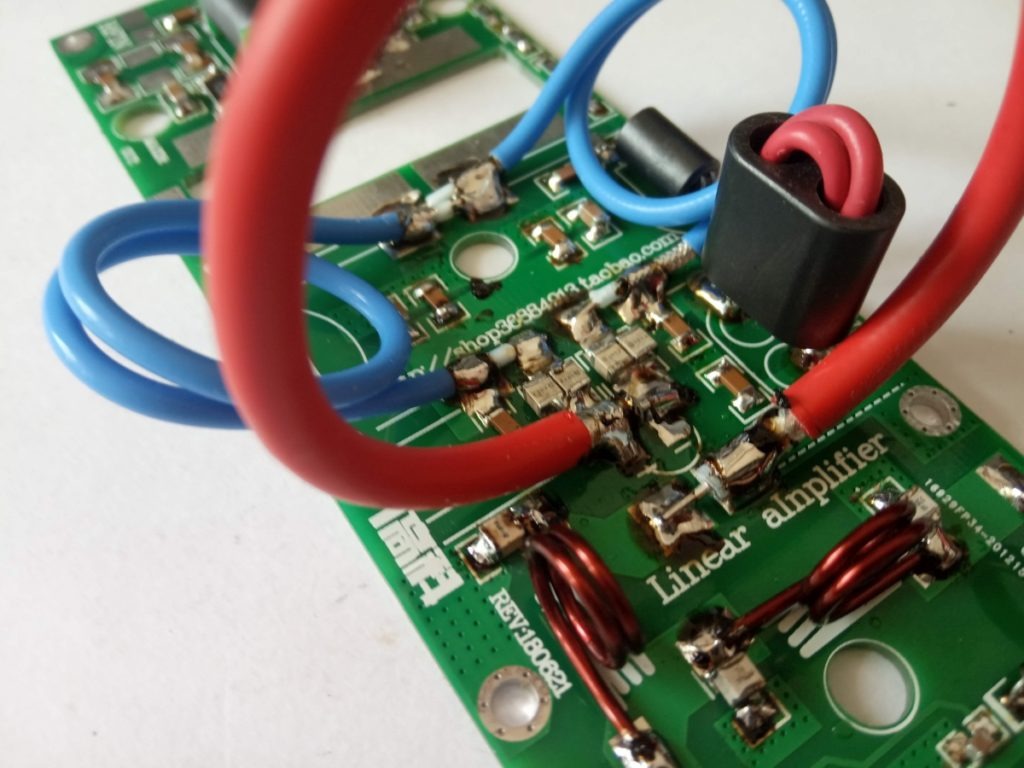Cheap VHF amplifier
How to increase the power of the device on 144 MHz? One option is LDMOS amplifier with MRF9180. These amplifiers are available as kits from various, mostly Chinese, sellers on platforms such as Ebay, Amazon, or Aliexpress. Their price is up to €40. However, such a kit requires additional components such as a power supply, heatsink, RX/TX switching system, and mechanical solution, or even a protection module. The total price will be higher. However, you can get a quality 144 MHz amplifier with high gain.
The choice of MRF9180 was also given by the fact that I have a stabilized power supply 28V/9A with a toroidal transformer. Practically the same type of amplifier can also be fitted with other MOSFET-s, for example MRF186 or MRF9120.
Documentation of VHF amplifier MRF9180
The disadvantage of ordering a kit is the absence of relevant documentation. Fortunately, it is possible to obtain the necessary information, for example, on the website GM4JTJ.
The kit arrived to me approximately three weeks after ordering. The PCB is of high quality and the components were sorted. MRF9180 and ATC capacitors were used, which the seller warned in advance. That's why I measured the MOSFET in advance, but fortunately it was functional.
Compared to the assembly diagram of components and description GM4JTJ are some components of different values and therefore I recommend making a plan on how to assemble them right at the beginning. For example, blocking capacitors in the power supply branch may have different values, but I do not recommend changing values in the RF branch.

Mounting of the PCB of the RF amplifier with MR9180
Mounting of the PCB start by mounting SMD components in the power supply branch.
After mounting these components, I continued with ATC capacitors. Be careful to use the correct values. Ideally, measure the capacitance of the capacitors.
Coils of the output supplementary filter are wound on a drill. The most laborious is the production of transformers. Input transformer has a turns ratio of 3:1 (which gives a transformation ratio of 9:1). Winding needs to be done with care to avoid damaging the insulation on the wires.
Output transformation is formed by circuits of 25- and 50-ohm coaxial cables. In the supplied kit, the 50-ohm coaxial cable is red, the 25-ohm cables are blue. Both cables are relatively stiff and harder to strip. It requires good tools and a steady hand.

After mounting these components, follows verification of correctness. Do not mount MRF9180 yet. We visually inspect the PCB and then use an ohmmeter to check for unwanted shorts. Next, we connect the power supply and check the voltage on the pads for the drain and gate of MRF9180. The bias control circuit should allow for smoothly adjusting the voltage from 0 to about 5V.
Now we can mount MRF9180. After loading the input and output, we can try adjusting the quiescent current. I was a bit concerned about possible oscillation, as the MOSFET has a high gain, but the amplifier seemed completely stable. The quiescent current is set to 800mA. I noticed its increase with increasing temperature.

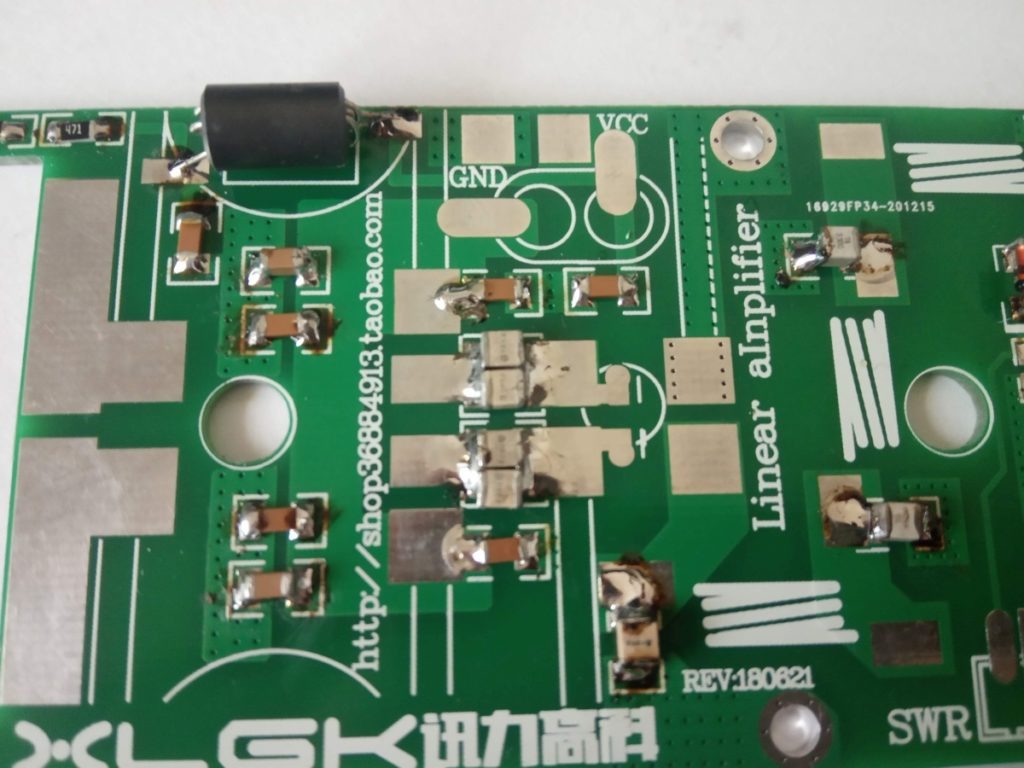
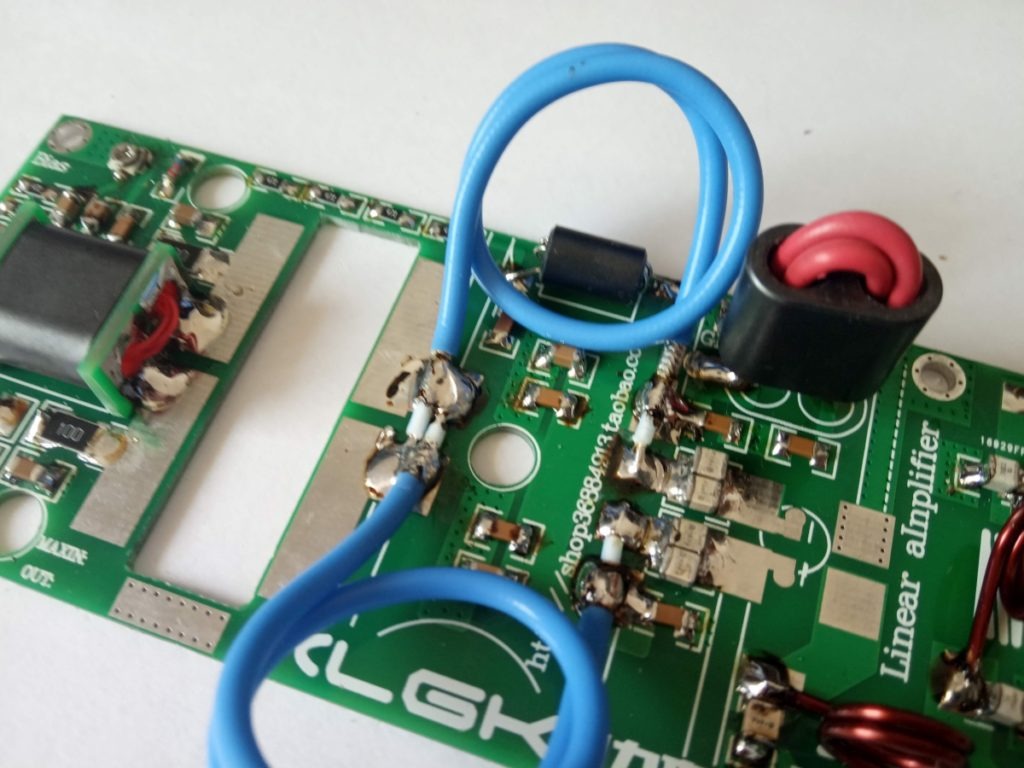

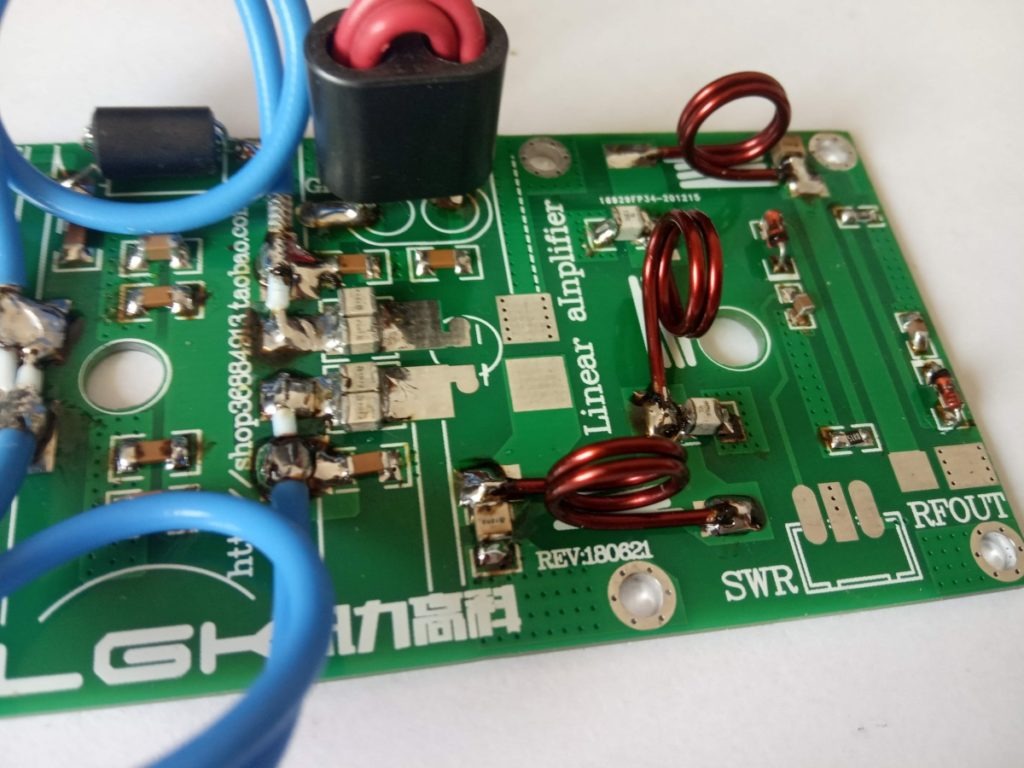
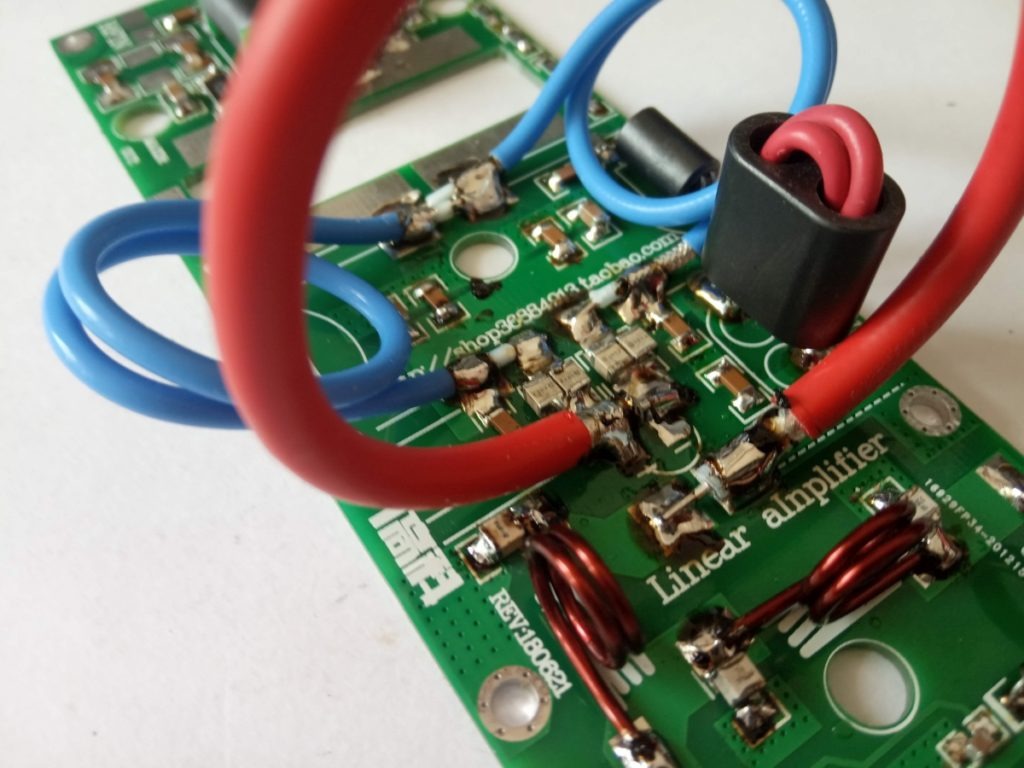
First testing of VHF amplifier with MRF9180
I first tested with VHF signal using VHF generator and VHF probe. It confirmed gain approximately 17 dB. Since I was afraid of possible damage to MRF9180, I installed on the input of the amplifier attenuator.
Waking from Kenwood TR-751E (5W) provides an output power of approximately 100W. Consumption at 28V is 7.2A, thus efficiency is approximately 50%.Cooling is provided by a copper CPU cooler with a fan. It has regulation by a bimetal switch, which bypasses the pre-charge resistor.
Switching and additional circuits of VHF amplifier with MRF9180
RX/TX switching circuits ensure relay switching QN59925 and auxiliary relays at the input of the amplifier and bias turn-on. The circuit uses a driver ULN2003 in a standard configuration.
Also directly on the PCB of the amplifier is detector of forward and reflected power, which allows to create a meter PSV. It was a shame not to use this option.
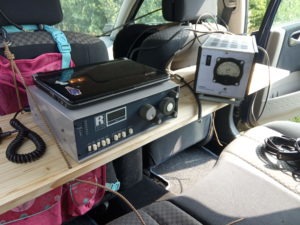
Mechanical solution of VHF amplifier with MRF9180
The amplifier is built into a case from an old measuring device. The front and rear panel are made of copper clad laminate and a printed label on A4 adhesive foil. It is sprayed with several thin layers of clear lacquer for improved durability.
Evaluation, advantages and disadvantages of VHF amplifier with MRF9180
The amplifier behaves very well in practice. I did not notice the activation of the second speed stage of the cooling turbine during SSB operation, i.e. 50°C at idle on the copper cooler. I had a lot of material in stock, so I estimate the production costs at 50 € in total. However, the construction is not suitable for beginners and also challenges experienced radio amateurs.
However, there is a certain risk quality of MRF9180 from China. Many constructors had their amplifier not working due to a fault in this circuit or the LDMOS went to silicon heaven very soon. One piece of MRF9180 also stopped working for me. Several sources recommend buying LDMOS from trusted sellers. In that case, the reliability is reportedly much higher.
